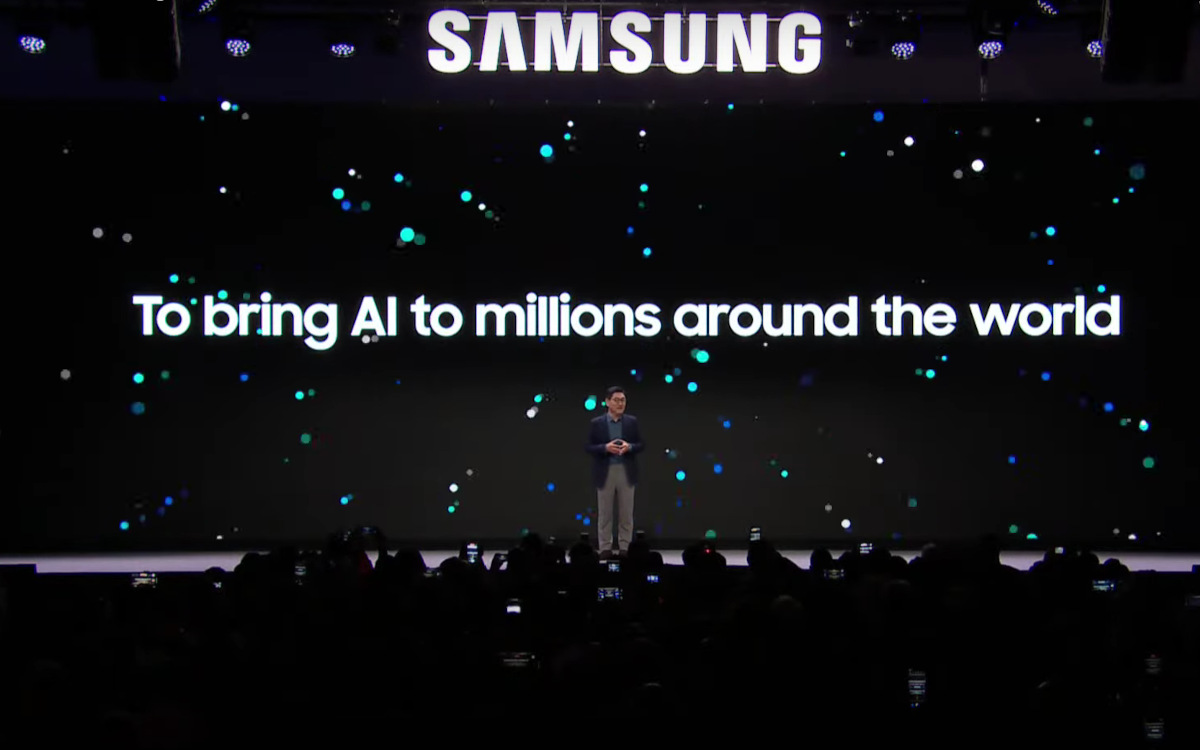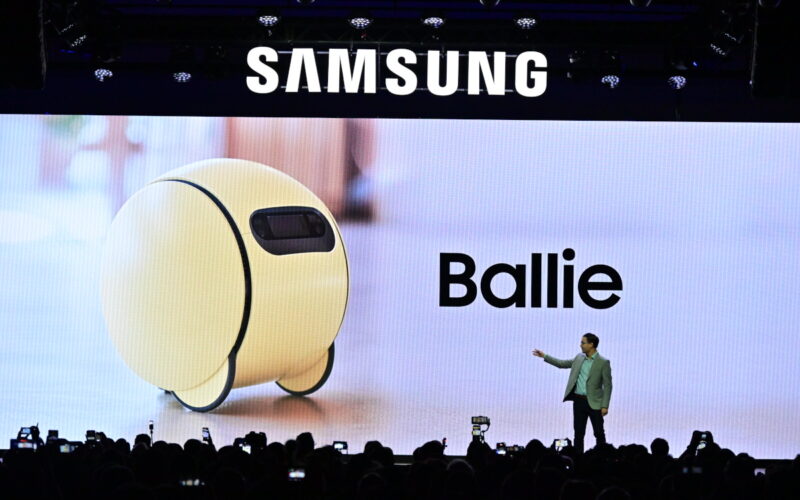From the 2024 Samsung CES keynote, rolling projectors and transparent MicroLED made it to the headlines. For the digital signage industry, however, it was the nuances and platform trends that are particularly relevant.

Samsung CES 2024 Keynote: Everything AI and IT Security
It didn’t exactly come as a surprise that Samsung’s CES keynote revolved around AI – as did every single 2024 inauguration speech in the tech space. We did not see a standout product this year that grabbed all the headlines. Instead, Samsung placed the topics AI, security, and sustainability at the forefront of its CES appearance. The keynote “AI for All,” presented a vision of how AI in hardware and in platforms would save time, boost efficiency, encourage creativity, and offer more personalized experiences.
AI pushes IT security to the forefront
Ten years ago, Samsung launched the Knox security platform, which has since made its way into Samsung’s professional Digital Signage solutions. What initially started as a premium feature only in Samsung’s top products is now integrated everywhere. From smartphones to consumer TVs to Digital Signage. For Samsung, IT security is no longer a luxury.
At CES in Las Vegas this year, Samsung introduced Knox Matrix, an advancement of the security platform. With Knox Matrix, interconnected Samsung devices monitor each other. The point is to be able to monitor entire spaces by combining the hardware. IoT devices like sensors can be integrated into the Matrix, too.
The trend toward increased IT security is also driven by numerous additional AI features, which often contain privacy-sensitive information. The allure of AI is only as good as its data protection, a domain in which global corporations like Samsung have an advantage through the trust they have earned over the years.
Sustainability is becoming a norm
Compared to 2023, sustainability took less of a focus at this year’s Samsung CES appearance. Though Samsung would surely argue that it’s natural to develop products and solutions as sustainably as possible. Currently, only 14 percent of all the plastic incorporated in Samsung devices is made from recycled plastic, so there’s still a lot of room for improvement.
For the end-user, the energy-efficiency of the devices is more relevant than recycled plastics. To help the users operate Samsung devices more energy efficiently, Samsung changed factory default settings and introduced digital aids. These are significant sustainability levers, especially in Consumer Electronics, as once set up, devices typically run for years without the settings being altered. This also translates to professional settings where an energy-saving default setting would be activating the brightness sensors, for instance.

Samsung introduces projection on wheels
And what about the cool new devices? From a Digital Signage viewpoint, Samsung’s Transparent MicroLED stole the show this year. Apart from that, there weren’t any major launches that would qualify for professional use cases. The new Premier 8k projector for instance, which can be wirelessly connected, is probably less suitable in that regard. We do, however, expect more to be revealed at ISE in Barcelona in three weeks.
The “oh-so-cute” role was taken by the rolling AI assistant, Ballie. In its first generation, Ballie was a rolling tennis ball, but Ballie 2nd Gen comes with an integrated projector. It’s like a smart projector on wheels. Like The Freestyle on wheels.
Following Ikea, Samsung now offers speakers in the form of picture frames. Named Samsung Music Frames, these speakers could provide great sound in stores or hotel lobbies.
Automotive solutions were also showcased on the Las Vegas stage. Samsung’s subsidiary Harman is a major automotive supplier and now connects Smart Home with Connected Cars.

Conclusion
We didn’t see a new killer product to be revealed during the Samsung CES keynote – at least not one with broad-reaching implications for the professional segment. Samsung did, however, set two key focus areas for the 2024 product year: AI and IT security. Both are also very relevant for digital signage, DooH, and retail technology.
